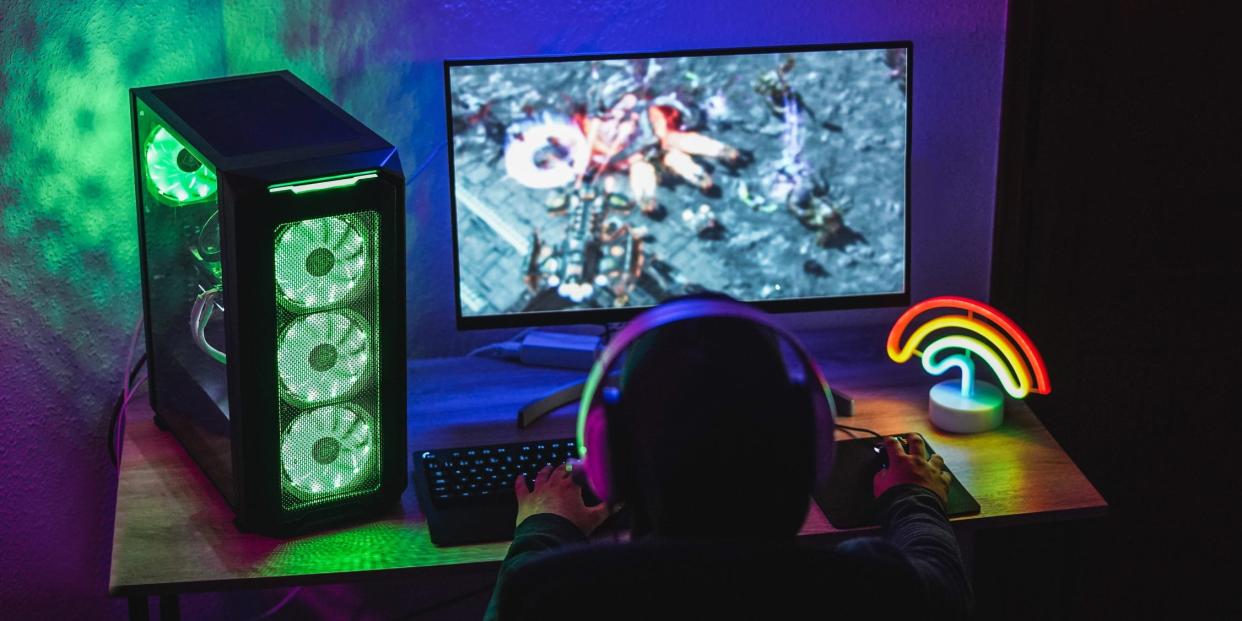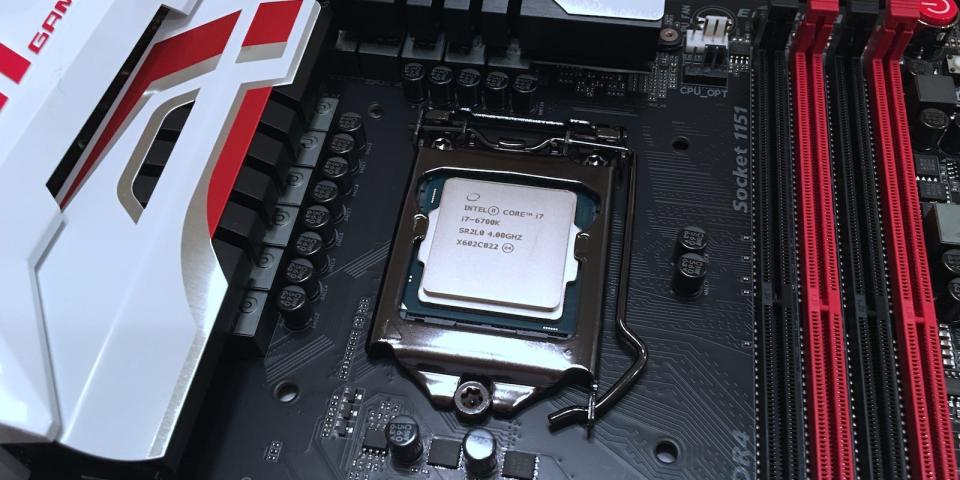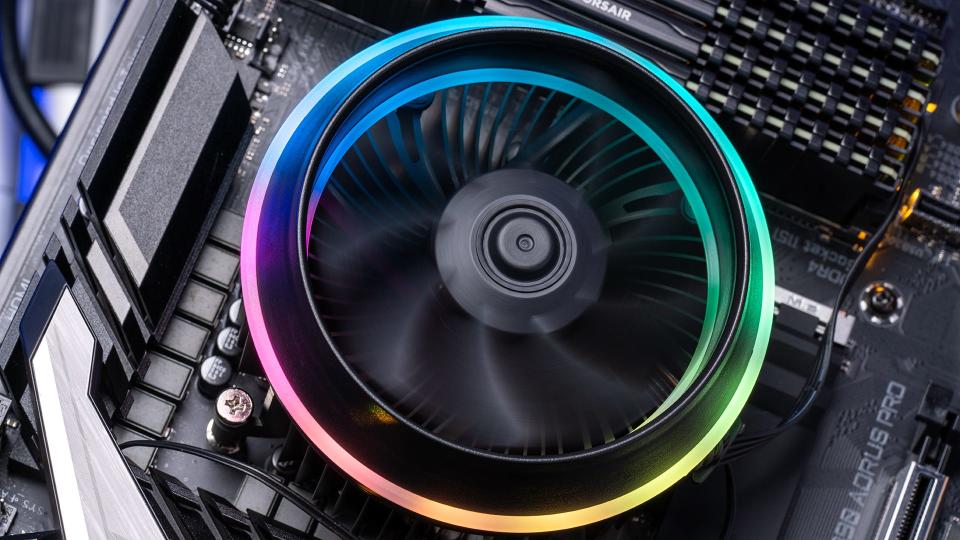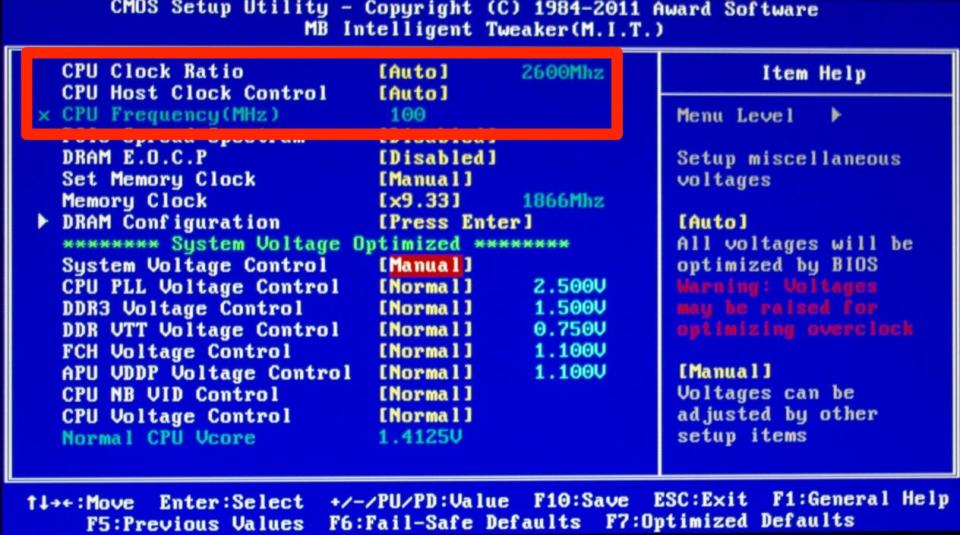What is overclocking? How to boost your PC's speed and power by changing its CPU settings

Overclocking is the process of forcing your computer to run faster than it's intended to go.
You can overclock both your CPU and graphics card, which can help you run advanced programs on an older PC.
Although overclocking is largely safe, it's possible to run into overheating and crashing issues.
Overclocking a component in your computer - usually the CPU, and occasionally the graphics card - makes your computer run faster than it was originally intended. This lets you improve your computer's performance without spending money to upgrade or enhance your PC.
Not every computer can be overclocked, and there are some risks associated with overclocking as well. Here's everything you need to know.
What is overclocking?
Different computer processor chips run at different speeds - this is known at their "clock speed." A higher clock speed means a CPU can run more operations per second, and thus run your computer faster.
But even processors with different speeds are all made on the same assembly line. It's only after the processors are built that companies test them for defects, take out the more defective ones, and manually "throttle down" those chips to make them run slower in a computer.

That means that in theory, even these slower chips can run at faster speeds if you want them to - that's how they were built, after all. This is where overclocking comes in.
Overclocking lets you undo the throttling and run that slower chip at a faster speed, as if it were a less defective model.
To do this, you need to increase the processor's "multiplier," which can be found in your computer's UEFI or BIOS menu, causing the chip's clock speed to increase.
The pros and cons of overclocking
Overclocking is incredibly popular among computer enthusiasts, gamers, and anyone who regularly needs to run programs that take a lot of CPU power. This can include graphic design apps, 3D modeling programs, and more. Done right, it can increase your computer's performance essentially for free.
When you join discussions about building computers or buying graphics cards, you'll often find people talking about how easily their computers can be overclocked. Buying a less expensive graphics card that can be overclocked can save money, while still ensuring excellent performance.
In recent years, however, there's been some evidence that overclocking isn't as useful as it used to be. Modern CPUs already run so fast that overclocking can have little effect. And more important, improving your processor performance can be useless if the rest of your computer isn't fast enough to keep up. This is called "bottlenecking."
For example, if you have a slow hard disk drive (HDD), overclocking your CPU can't make it run faster. Likewise, programs that use your graphics card more than the CPU won't be helped by an overclocked CPU.

Overclocking comes with some inherent risks. Companies don't throttle down processor chips for fun - they do it because the chip has defects, and running it too fast can cause your computer glitches.
Too much overclocking can lead to instability and crashing apps, as well as the occasional Blue Screen of Death. Frequent crashes can cause data loss and frustration. In some cases, overclocking can even damage your CPU or graphics card permanently.
You need to weigh the sometimes-marginal performance improvements that come from overclocking against these risks.
How to overclock your processor
If you want to overclock your computer, first assess if your processor supports overclocking - not all do.
Intel adds an "K" or an "X" to the model numbers of the Intel Core CPUs that can be overclocked. For example, the Intel Core i9-10900K can be overclocked; the Intel Core i9-10900F cannot.
If you have an AMD CPU, the news is better - any "Ryzen" CPU can be overclocked.
You should also ensure your computer has adequate cooling equipment. Your CPU should have a heavy duty heatsink and large cooling fans. You might even want to use a liquid cooling system to deal with the extra heat generated by your faster CPU.
Your CPU will need enhanced cooling if you plan to run it at a higher clock speed.
To overclock the CPU, restart your computer and enter the startup menu in the computer's UEFI or BIOS. These startup screens vary dramatically from one manufacturer to another, so you'll need to look for the overclocking controls.

Quick tip: To open your computer's BIOS or UEFI boot menu, open Settings, then "Update & security," and then click "Recovery." Under the "Advanced startup" heading, click "Restart now."
It's a good idea to increase the multiplier by a small amount, reboot the computer and test it. You can increase the clock speed in increments to get to the speed you are interested in.
Every time you increase the clock speed, spend a few hours "stress testing" the computer. You can use an app like Prime95 to temporarily run the CPU at 100% load to make sure there are no problems with the PC.
If your computer crashes, you get a Blue Screen of Death, or your programs won't open, return to the UEFI or BIOS menu and revert to a slower clock speed.
It's also possible to overclock your graphics card's GPU, though you can't do that from the UEFI or BIOS menu. To speed up your GPU, you'll need to use an overclocking utility - one of the most common is MSI Afterburner.
How to install a graphics card into your Windows PC and upgrade its performanceA beginner's guide to graphics cards and how they help power your computer's imagesHow to download Nvidia drivers to keep your computer's graphics running smoothly and vibrantlyHow to update or reinstall your drivers in Windows 10 to keep your computer running smoothly
Read the original article on Business Insider

